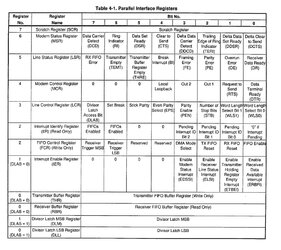I dumped my netlink ROMs, leaving them here for anyone wishing to dig deeper.
First one is MX27C1000, 128Kx8 EEPROM connected to L39 MCU. Surprisinly it contains a lot of strings from different x86 motherboard BIOSes, this is either Rockwell being lazy, or chip being used elsewhere and not completely erased before manufacturing. There is something modem-related at 0x3D00-0x7F00, but i couldn't disasm it as a 6502 code (which L39 CPU is presumably compatible with). There are strings at the beginning, so execution starts at a non-zero address, if starts at all.
Second is NM24C02, 2Kbit (256 byte) serial EEPROM, connected to L39 as well. It contains some kind of a configuration, 8 byte header, 2 almost exact 36-byte sequences (1 byte is different), and some magic sequence at the end of the ROM. Maybe there is a execution start address for the 1st ROM somewhere.
First one is MX27C1000, 128Kx8 EEPROM connected to L39 MCU. Surprisinly it contains a lot of strings from different x86 motherboard BIOSes, this is either Rockwell being lazy, or chip being used elsewhere and not completely erased before manufacturing. There is something modem-related at 0x3D00-0x7F00, but i couldn't disasm it as a 6502 code (which L39 CPU is presumably compatible with). There are strings at the beginning, so execution starts at a non-zero address, if starts at all.
Second is NM24C02, 2Kbit (256 byte) serial EEPROM, connected to L39 as well. It contains some kind of a configuration, 8 byte header, 2 almost exact 36-byte sequences (1 byte is different), and some magic sequence at the end of the ROM. Maybe there is a execution start address for the 1st ROM somewhere.
Attachments
Last edited:


